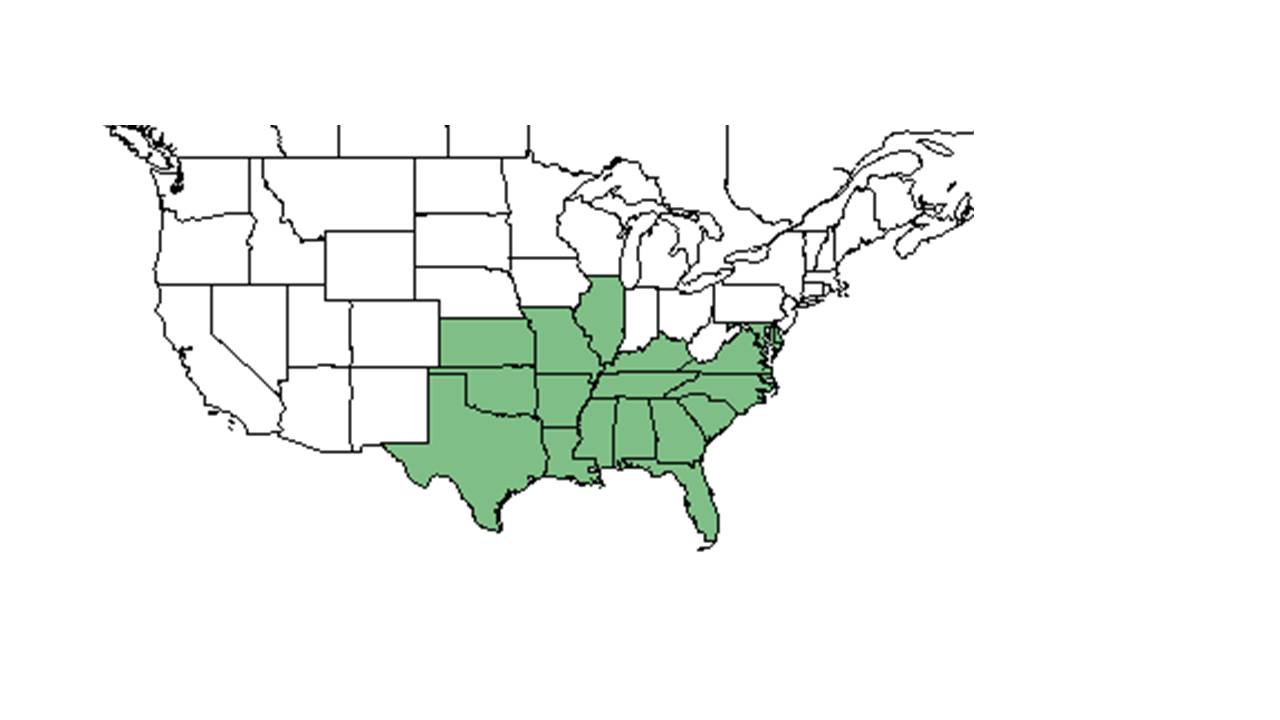Difference between revisions of "Mecardonia acuminata"
(→Description) |
|||
| Line 22: | Line 22: | ||
==Description== | ==Description== | ||
<!-- Basic life history facts such as annual/perrenial, monoecious/dioecious, root morphology, seed type, etc. --> | <!-- Basic life history facts such as annual/perrenial, monoecious/dioecious, root morphology, seed type, etc. --> | ||
| + | It has been observed to be both frequent and infrequent where it is found (FSU Herbarium). | ||
| − | + | "Erect, branched, glabrous perennial, the stems angled, 1-5 dm tall, usually blackening on drying. Leaves opposite, firm, oblanceolate to elliptic, mostly 1-4.5 cm long, 5-12 mm wide, distally serrate, sessile or narrowly cuneate to a short, obscure petiole. Peduncles axillary, solitary, about as long, or longer than the subtending leaf, with 2 linear bractlets at the base; sepals 5, linear-lanceolate, 7-9 mm long; corolla white or tinged with lavender, personate, 9-11 mm long; fertile anthers 4, normal. Capsule ellipsoid, 6-8 mm long." - Radford et al 1964 | |
==Distribution== | ==Distribution== | ||
Revision as of 12:24, 4 February 2016
| Mecardonia acuminata | |
|---|---|

| |
| Photo by John R. Gwaltney, Southeastern Flora.com | |
| Scientific classification | |
| Kingdom: | Plantae |
| Division: | Magnoliophyta - Flowering plants |
| Class: | Magnoliopsida – Dicotyledons |
| Order: | Scrophulariales |
| Family: | Scrophulariaceae |
| Genus: | Mecardonia |
| Species: | M. acuminata |
| Binomial name | |
| Mecardonia acuminata (Walter) Small | |

| |
| Natural range of Mecardonia acuminata from USDA NRCS Plants Database. | |
Common name: axilflower
Contents
Taxonomic notes
Description
It has been observed to be both frequent and infrequent where it is found (FSU Herbarium).
"Erect, branched, glabrous perennial, the stems angled, 1-5 dm tall, usually blackening on drying. Leaves opposite, firm, oblanceolate to elliptic, mostly 1-4.5 cm long, 5-12 mm wide, distally serrate, sessile or narrowly cuneate to a short, obscure petiole. Peduncles axillary, solitary, about as long, or longer than the subtending leaf, with 2 linear bractlets at the base; sepals 5, linear-lanceolate, 7-9 mm long; corolla white or tinged with lavender, personate, 9-11 mm long; fertile anthers 4, normal. Capsule ellipsoid, 6-8 mm long." - Radford et al 1964
Distribution
Ecology
Habitat
This species has been found along grassy limestone glades in open areas, in floodplain forests, and savannas (FSU Herbarium). It also can be found in human distrubed areas such as parking areas, powerline corridors, and roadside ditches (FSU Herbarium). This species grows in semi-shaded environments wet, limestone, and sandy loam soils (FSU Herbarium). In Louisiana, soils are upland coastal plain type with little slope and low fertility (Thill 1983). Associated species include Sporobolus vaginiflorus, Stenaria nigricans, Polygala grandiflora var. angustifolia, Rhynchospora, Fuirena, and Scleria (FSU Herbarium).
Phenology
This species has been observed flowering and fruiting in February and September (FSU Herbarium).
Seed dispersal
Seed bank and germination
Fire ecology
Pollination
Use by animals
Diseases and parasites
Conservation and Management
Cultivation and restoration
Photo Gallery
References and notes
Florida State University Robert K. Godfrey Herbarium database. URL: http://herbarium.bio.fsu.edu. Last accessed: June 2014. Collectors: Loran C. Anderson, Ann F. Johnson, Wilson Baker, Robert K. Godfrey, R.A. Norris, R. Komarek, and Lisa Keppner. States and Counties: Florida: Calhoun, Gadsden, Jackson, Jefferson, Leon, Suwannee, Taylor, and Washington. Georgia: Grady.
Thill, R. E. (1983). Deer and cattle forage selection on Louisiana pine-hardwood sites. New Orleans, LA, USDA Forest Service.